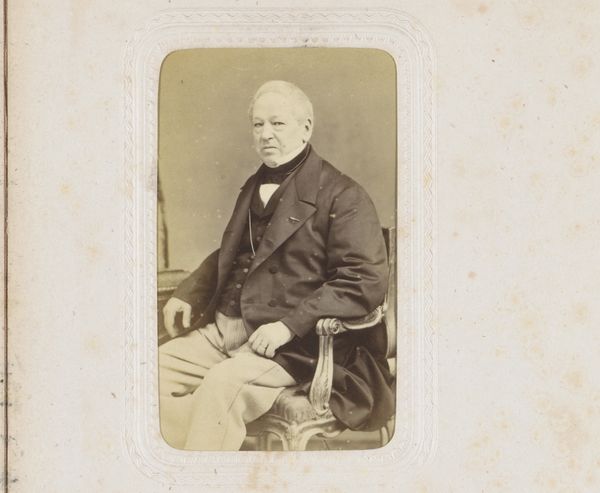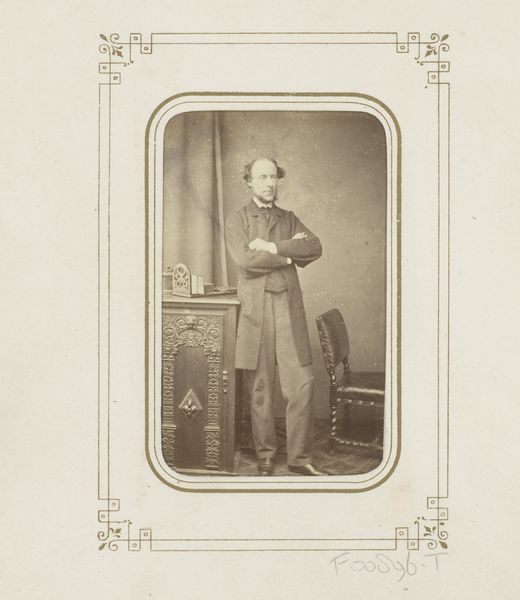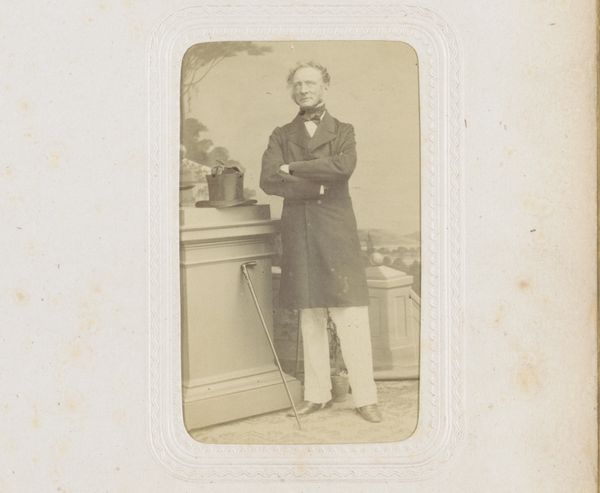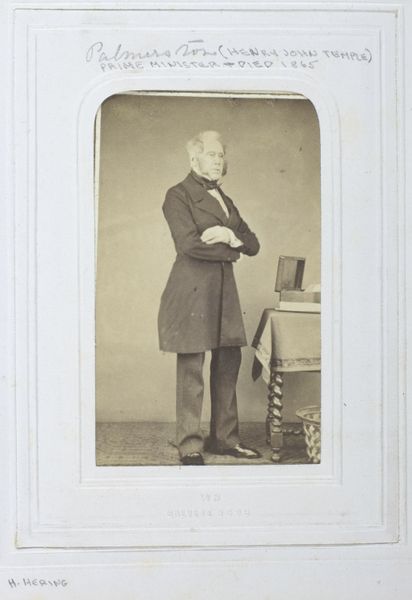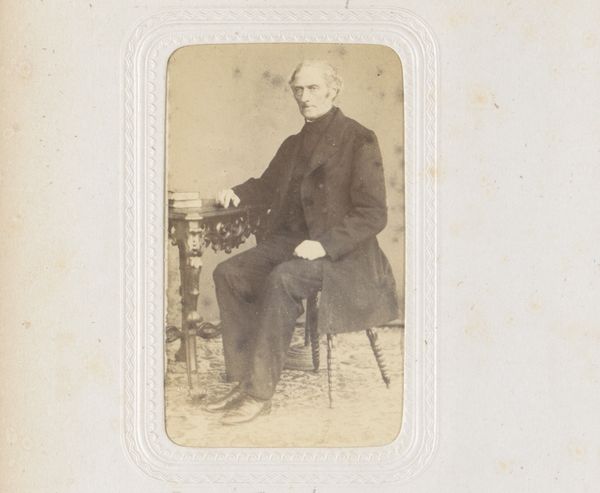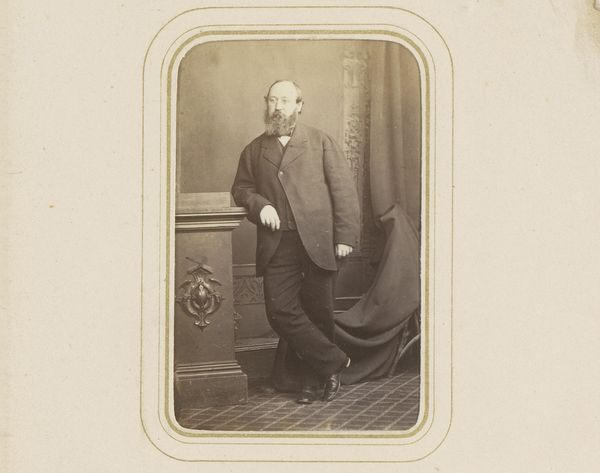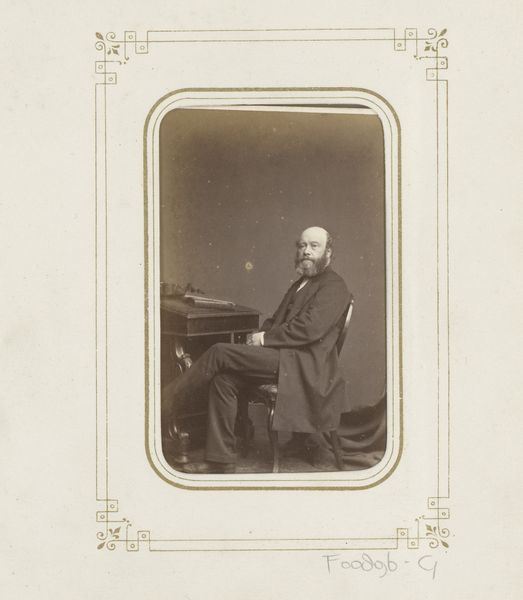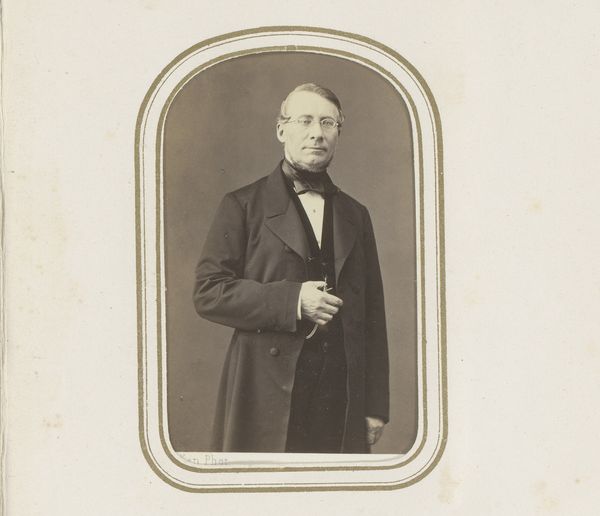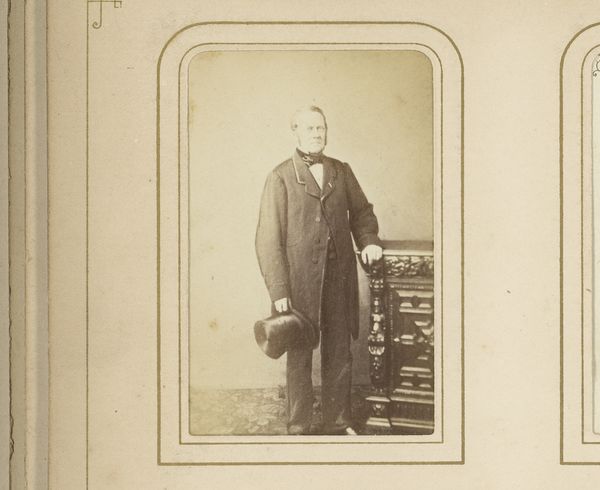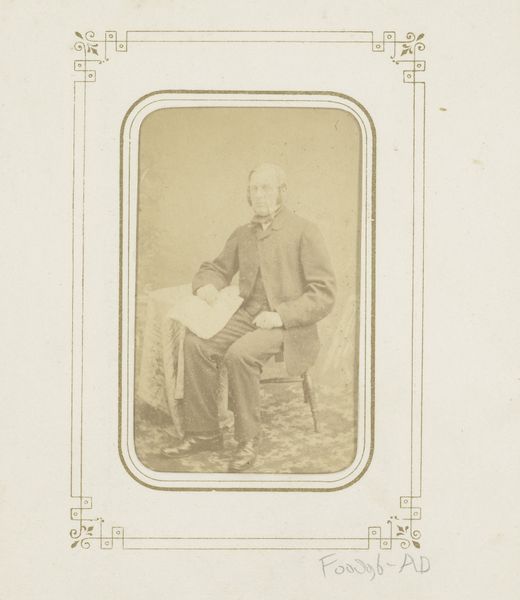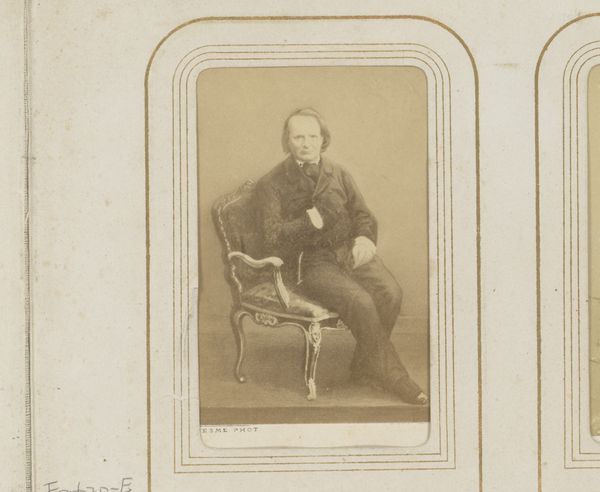
#
photo of handprinted image
#
table
#
toned paper
#
vintage
#
photo restoration
#
charcoal drawing
#
archive photography
#
historical photography
#
old-timey
#
19th century
#
watercolor
Dimensions: height 82 mm, width 50 mm
Copyright: Rijks Museum: Open Domain
Editor: This is "Portret van een zittende man aan een tafel, aangeduid als Fosfordeux," created sometime between 1855 and 1870 by W. (I) Mayer. It looks like a photograph, almost sepia-toned. It’s really intriguing… there's something so posed and deliberate about it. What do you see in it? Curator: It is compelling. Note how the photographer, Mayer, would have been engaged in both science and art to produce this image. The toned paper and hand-printed aesthetic indicate a deliberate crafting process, one that attempts to reconcile art's creative production with industry, revealing 19th century social context and artistic consumption, no? Editor: That's fascinating. I hadn't considered the labor involved. It’s easy to forget about the material processes behind photography, thinking about them as somehow "less crafted." Curator: Exactly. What labor was involved in the selection of materials? Was this photographic process easily available? Were these photographs commonplace or luxury objects? Photography, even early on, blurred the lines between reproducibility and high art. Note too, the staging involved, which elevates the subject. How would staging contribute to consumption and the production of artistic value? Editor: So, even in what appears to be a straightforward portrait, the means of production – the choice of materials, the printing process, even the staging – played a significant role in how it was perceived and valued. Curator: Precisely. And what did photography mean to labor practices? Were painted portraits suddenly obsolete, and what would have been the impact? How would such a new medium alter how portraits as objects would be acquired? Editor: It's interesting to consider the economic impact and the shift in artistic labor it would create. Thank you, I’ll never look at old photos the same way! Curator: The material informs the context; the context, the making; the making, the object’s role in a culture of material consumption.
Comments
No comments
Be the first to comment and join the conversation on the ultimate creative platform.

